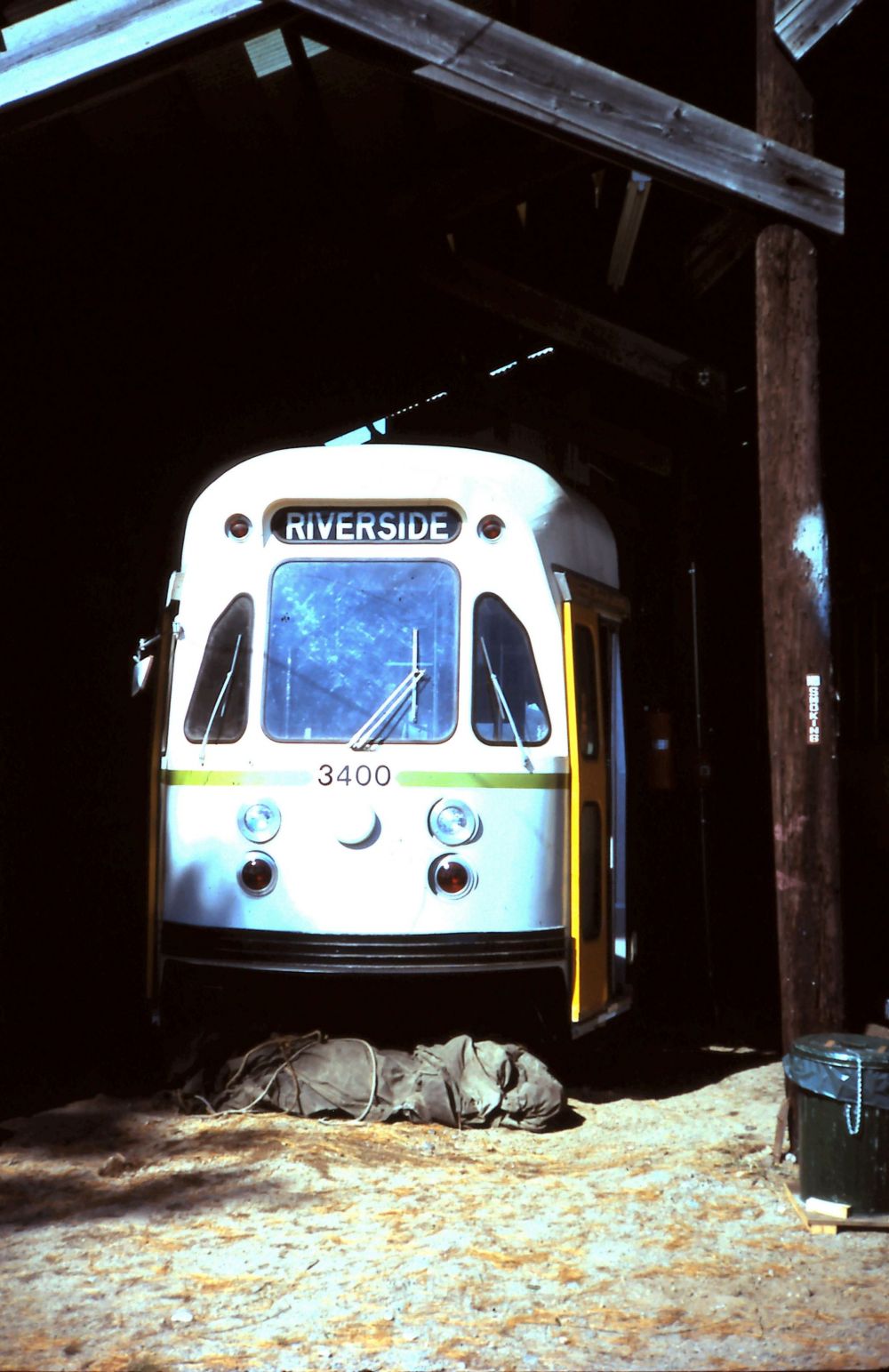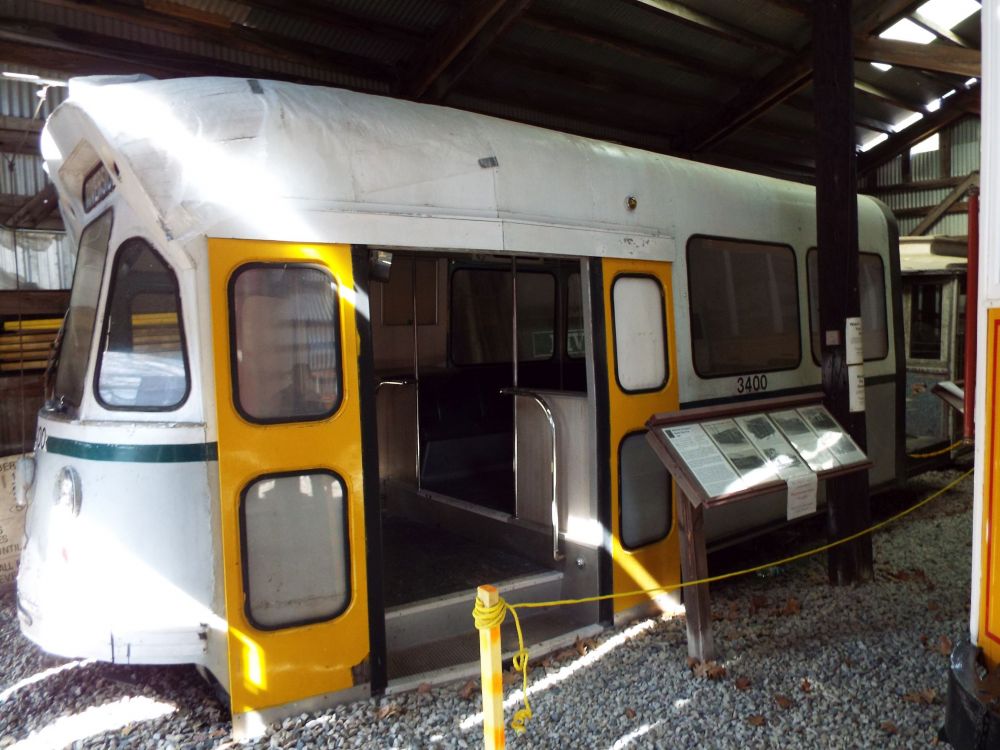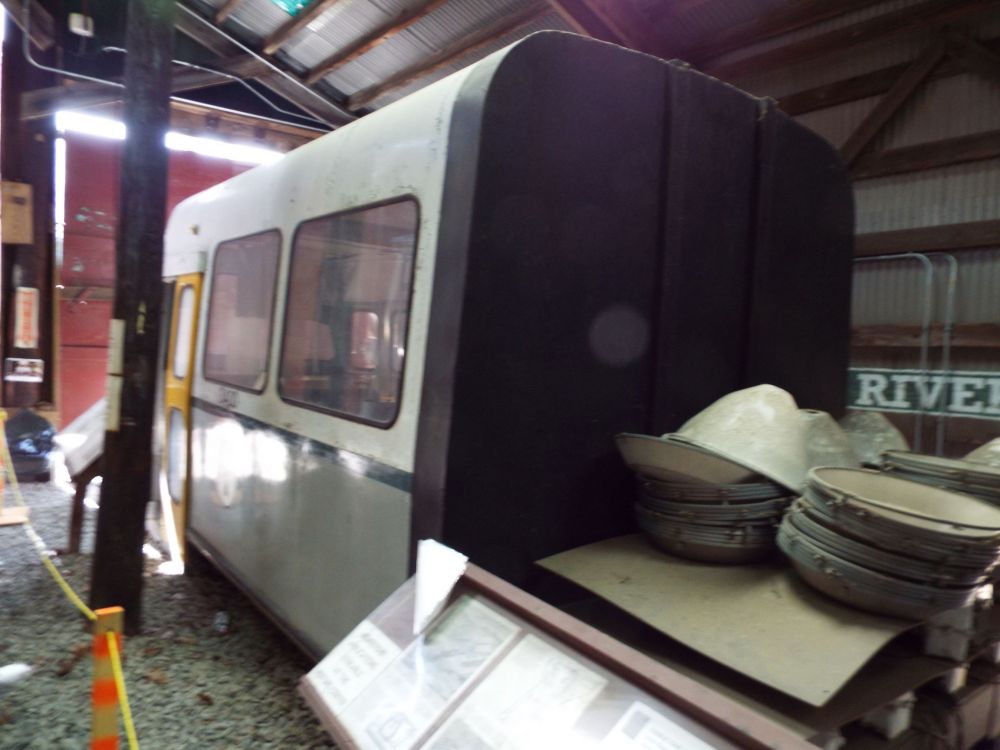
Paul Kehoe in 1973
- Builder
- MBTA
- Description
- Mockup of proposed Boston 'Type 6'
- Secondary Use
- None
- Type
- Other
- Year
- 1968
- Retired from Service
- 1972
- Acquired by the Museum
- 1972
- Note
- No. 3400 is on display in the Riverside exhibit barn.
Massachusetts Bay Transportation Authority 3400
From Boston, Massachusetts
History
After the Massachusetts Bay Transportation Authority (MBTA) assumed operation of Boston’s transit system in 1964, the Green Line (the streetcar system) was operated by Presidents Conference Committee (PCC) streetcars that had been built in the 1941-1951 period. In the late 1960s, the MBTA was considering a replacement for the PCCs. Prior to the PCCs, the Boston Elevated Railway, which was the operator until 1947, designated each succeeding series of trolleys as Types 1 through 5. So, a replacement for the PCCs would be Type 6. In 1968, the MBTA’s Everett Shop built No. 3400, which is a full-scale, half-length mock-up of a proposed Type 6 car. The proposed car would be air-conditioned (a first for Boston), 50 feet long (3 feet longer than a typical PCC) and would accelerate faster. It would carry 264 passengers, including 90 seated. The mock-up is made of wood, metal and plastic. A mirror was at the rear of the interior to give an illusion of length. The MBTA displayed No. 3400 at the 1970 meeting of the American Transit Association. In the 1960s and 1970s, the MBTA had also constructed mock-ups before ordering the 01400, 01600 and 0600 series rapid transit cars.
The MBTA did not order production of Type 6 cars. Rather, the MBTA also considered the Siemens-Duwag light rail car, of which one was built as a demonstrator in 1970 for Hanover, Germany. In 1970, the MBTA ordered two of the Duwag cars as demonstrators, but the Urban Mass Transit Administration (UMTA), turned down funding. At the same time, San Francisco’s Municipal Railway was also considering replacements for its PCC trolleys. UMTA required San Francisco and Boston to use a common design and to use an American builder. So, in 1973, the MBTA and San Francisco ordered “Standard Light Rail Vehicles” from Boeing. The Boeing SLRVs turned out to be problem-prone and costly to maintain. Whether the Type 6s would have been better remains an unanswered question. Never-the-less, single body, double-truck streetcars, such as the proposed Type 6, had become obsolete by this time, with transit systems transitioning to large-capacity, multi-body articulated cares run by a single operator.
The MBTA donated the No. 3400 mock-up to Seashore in 1972. The MBTA, however, scrapped its rapid transit mock-ups. No. 3400 joins Seashore’s comprehensive collection of Boston transit vehicles, including No. 3424 – one of the Boeing light rail vehicles that was built instead of the proposed Type 6 cars. Seashore repainted No. 3400 in 1991. Seashore removed the interior mirror.
Additional Images

Kenyon F. Karl on 04/17/17

Kenyon F. Karl on 04/17/17
© 1998 - 2025 New England Electric Railway Historical Society. All Rights Reserved.